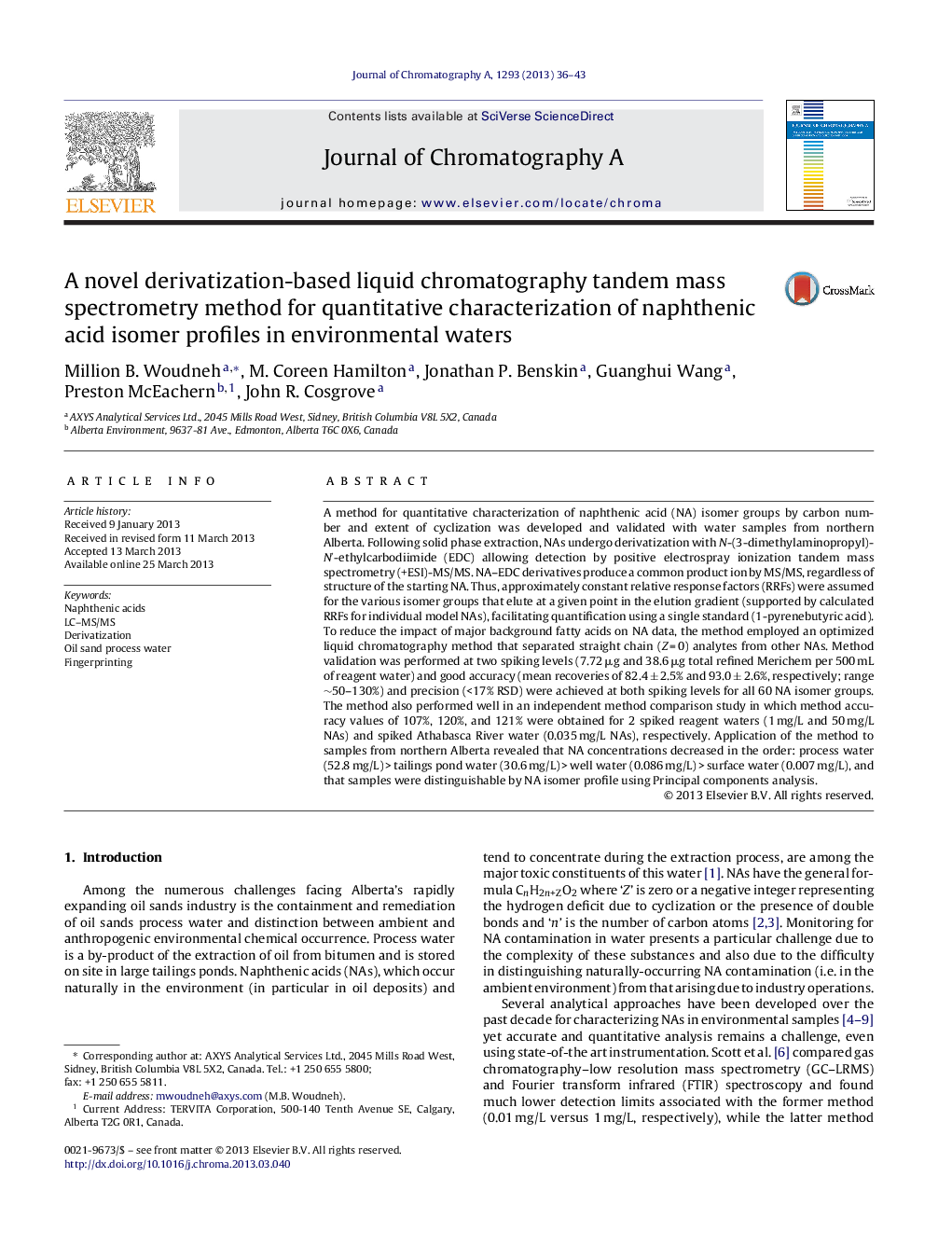| Article ID | Journal | Published Year | Pages | File Type |
|---|---|---|---|---|
| 1203943 | Journal of Chromatography A | 2013 | 8 Pages |
•A unique derivatization based method for quantitative analysis of NAs is presented.•The method separated saturated fatty acids from NAs while separating NAs into isomer groups.•Both intra and inter-laboratory validation data are presented.•Data are presented for four types of environmental waters collected from Alberta.•Principal component analysis distinguished NA fingerprints in the various samples.
A method for quantitative characterization of naphthenic acid (NA) isomer groups by carbon number and extent of cyclization was developed and validated with water samples from northern Alberta. Following solid phase extraction, NAs undergo derivatization with N-(3-dimethylaminopropyl)-N′-ethylcarbodiimide (EDC) allowing detection by positive electrospray ionization tandem mass spectrometry (+ESI)-MS/MS. NA–EDC derivatives produce a common product ion by MS/MS, regardless of structure of the starting NA. Thus, approximately constant relative response factors (RRFs) were assumed for the various isomer groups that elute at a given point in the elution gradient (supported by calculated RRFs for individual model NAs), facilitating quantification using a single standard (1-pyrenebutyric acid). To reduce the impact of major background fatty acids on NA data, the method employed an optimized liquid chromatography method that separated straight chain (Z = 0) analytes from other NAs. Method validation was performed at two spiking levels (7.72 μg and 38.6 μg total refined Merichem per 500 mL of reagent water) and good accuracy (mean recoveries of 82.4 ± 2.5% and 93.0 ± 2.6%, respectively; range ~50–130%) and precision (<17% RSD) were achieved at both spiking levels for all 60 NA isomer groups. The method also performed well in an independent method comparison study in which method accuracy values of 107%, 120%, and 121% were obtained for 2 spiked reagent waters (1 mg/L and 50 mg/L NAs) and spiked Athabasca River water (0.035 mg/L NAs), respectively. Application of the method to samples from northern Alberta revealed that NA concentrations decreased in the order: process water (52.8 mg/L) > tailings pond water (30.6 mg/L) > well water (0.086 mg/L) > surface water (0.007 mg/L), and that samples were distinguishable by NA isomer profile using Principal components analysis.
